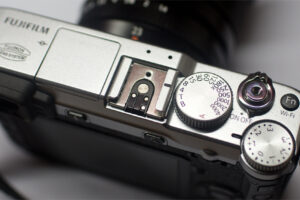Mostly hard lights mounted on overhead grids connected to dimmers light a stage play. This is exactly opposite of how I light up a scene for movies so when Mr. Saurabh Sukla and Mr. Ashwin Gidwani contacted me to shoot a promo for their successful play Two To Tango Three To Jive, I had not idea how to proceed. They said it should look exactly like the play – they will have their lighting director set up the lights and I would just need to record it, not need to call for any ‘film lights’.
With my understanding on how human eye processes light and shade versus how a sensor records it, I sensed immediately that shooting it without supplementary lights and diffusing the overhead hard light when it hit the face at a wrong angle the results would be ghastly. I would be shooting it with exactly the lights they present the play to the audience but it would not look the same when seen on TV or web. The human eye has the great ability to focus on to a particular point of a wide scene and adjust to it. For example, when a bright spot light falls on an actor standing against a dark background (many parts of the play are lit like that) the eye when concentrating on the bright actor will quickly adjust and adapt to see the details on the face and when an action happens in the darkness, the eye will shift focus to that, adjust and see details.
A sensor will behave very differently and show maximum detail of the correctly exposed part of the frame and depending upon it’s Dynamic Range will show details in the darkest and the brightest parts of the frame. It was clear to me that I would have to insist on getting extra ‘film lights’ to throw some lights in the darkest areas
for it to be visible.
Besides lights I needed so soften the overhead lights or the eye sockets would go really dark and the nose/chin shadows would be very prominent and distracting. It would not make the actors look good. There was no way for me to put large diffusion on top and soften all the lights so I decided to soften the stage lights coming from top on the actor’s face by fixing a 4*4 frame with diffusion just above the actors head in all close ups. Then had to fill in a bit from a soft light from near the camera. The gels that the stage lighting director was using were not branded and had a very strong color. I changed all the gels to more subtle and pleasant gels manufactured by a prominent manufacturer.
Keeping economics in mind, it was decided that we would shoot this on DSLR. I choose Canon 1dc with Zeiss 35mm f1.4, Zeiss 135mm f2 for the job. Canon 1dc will allow me to shoot RAW 4k video, which would make color correction
much better. In my opinion shooting video in DSLR compressed mode is disaster as the whites clip too much and the blacks crush too much. RAW footage allows the technician far more leeway in balancing highlights and shadow.
The Zeiss lenses have manual focus with a long focus ring making life much easier for the focus puller. Pulling focus on Canon lenses is very inconvenient as the focus ring is small and if by any chance the ring is rotated beyond the infinity of minimum focus markings on the lens, the focus puller has to take fresh focus marks with actors. A real pain!
I used a Small HD 7” 1280*720 resolution monitor to check lighting and focus. I will not do this again as the monitor is too small to catch out of focus shots and has enhanced chroma, rich blacks that it makes the shoot look much better than it actually is. I will get a proper color calibrated 17” monitor.
Video link to the promo of the ‘play’.




Most Commented Posts